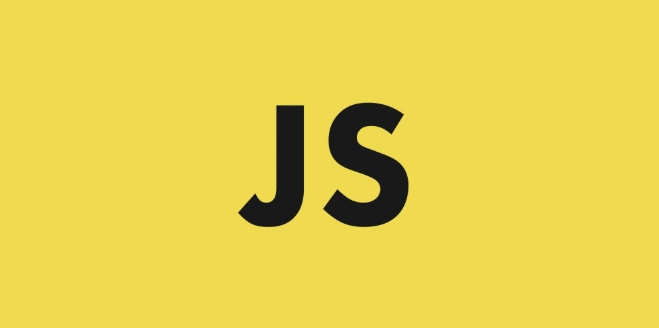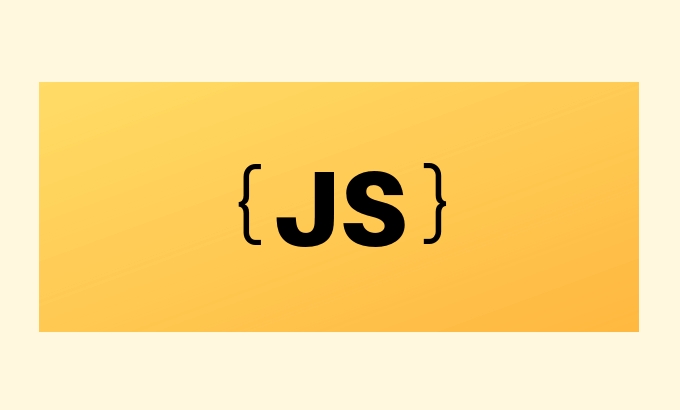How to handle cookies in JavaScript? 1. Set cookies: Use document.cookie and specify key=value and parameters such as expires, path, domain, etc.; 2. Read cookies: Get strings through document.cookie and parse them into objects for searching; 3. Delete cookies: Set the value to empty and set the expiration time to the past timestamp; 4. Notes include the size limit of cookies to 4KB, quantity limit, performance impact and security settings such as SameSite to prevent CSRF attacks.

Processing cookies is actually a very common requirement in front-end development, especially when it is necessary to manage user status, track behavior, or save some temporary data. Although localStorage and sessionStorage are available now, in some scenarios, such as setting an expiration time, cross-domain carrying cookies, etc., you still have to directly operate document.cookie.

Here are some practical methods and precautions you will use when handling cookies in plain JavaScript.
How to set a cookie?
The most basic way to set cookies is through document.cookie attribute. It looks like a string assignment, but there is actually a fixed format behind it.

The format is probably like this:
document.cookie = "key=value; expires=...; path=...";
Common parameters include:

-
expires: Specify the expiration time. If not set, the cookie will be invalid after the browser is closed. -
path: Specify the path to the cookie, usually set to/to indicate that the entire website is available -
domain: Specify the domain name to share cookies across subdomains -
secure: means that only sends under HTTPS -
SameSite: Prevents CSRF attacks, which can beStrict,Lax, orNone
For example:
document.cookie = "username=John; expires=Fri, 31 Dec 2024 23:59:59 GMT; path=/";
This sets a cookie with the username John, which is valid until the end of 2024.
How to read existing cookies?
Reading cookies is a bit troublesome, because document.cookie returns a string containing all cookies, separated by semicolons and spaces.
You need to parse this string yourself. for example:
function getCookie(name) {
const cookies = document.cookie.split("; ").reduce((acc, cookie) => {
const [key, value] = cookie.split("=");
acc[key] = value;
return acc;
}, {});
return cookies[name];
}Call method:
console.log(getCookie("username")); // Output JohnThis function converts cookies into an object for subsequent searches.
The correct way to delete cookies
JavaScript cannot delete cookies directly, but it can be set to an expired time:
document.cookie = "username=; expires=Thu, 01 Jan 1970 00:00:00 GMT; path=/";
This will automatically clear the cookie. Note that the path must be consistent with the settings, otherwise it may not be deleted.
Tips and precautions
- The size limit of cookies is about 4KB, so you can't store too much data
- There is also a limit on the number of cookies under each domain name (usually about 20)
- Every request will bring cookies, so don't put too much content, which will affect performance
- Setting
SameSite=StrictorLaxcan prevent cross-site request forgery (CSRF)
Basically that's it. Although the document.cookie API is a bit primitive, it is not difficult to use after understanding it clearly. The key is to pay attention to the details of format and path, otherwise problems will easily occur.
The above is the detailed content of How to handle cookies in plain JavaScript?. For more information, please follow other related articles on the PHP Chinese website!

Hot AI Tools

Undress AI Tool
Undress images for free

Undresser.AI Undress
AI-powered app for creating realistic nude photos

AI Clothes Remover
Online AI tool for removing clothes from photos.

Clothoff.io
AI clothes remover

Video Face Swap
Swap faces in any video effortlessly with our completely free AI face swap tool!

Hot Article

Hot Tools

Notepad++7.3.1
Easy-to-use and free code editor

SublimeText3 Chinese version
Chinese version, very easy to use

Zend Studio 13.0.1
Powerful PHP integrated development environment

Dreamweaver CS6
Visual web development tools

SublimeText3 Mac version
God-level code editing software (SublimeText3)

Hot Topics
 Why should you place tags at the bottom of the ?
Jul 02, 2025 am 01:22 AM
Why should you place tags at the bottom of the ?
Jul 02, 2025 am 01:22 AM
PlacingtagsatthebottomofablogpostorwebpageservespracticalpurposesforSEO,userexperience,anddesign.1.IthelpswithSEObyallowingsearchenginestoaccesskeyword-relevanttagswithoutclutteringthemaincontent.2.Itimprovesuserexperiencebykeepingthefocusonthearticl
 What is event bubbling and capturing in the DOM?
Jul 02, 2025 am 01:19 AM
What is event bubbling and capturing in the DOM?
Jul 02, 2025 am 01:19 AM
Event capture and bubble are two stages of event propagation in DOM. Capture is from the top layer to the target element, and bubble is from the target element to the top layer. 1. Event capture is implemented by setting the useCapture parameter of addEventListener to true; 2. Event bubble is the default behavior, useCapture is set to false or omitted; 3. Event propagation can be used to prevent event propagation; 4. Event bubbling supports event delegation to improve dynamic content processing efficiency; 5. Capture can be used to intercept events in advance, such as logging or error processing. Understanding these two phases helps to accurately control the timing and how JavaScript responds to user operations.
 A definitive JS roundup on JavaScript modules: ES Modules vs CommonJS
Jul 02, 2025 am 01:28 AM
A definitive JS roundup on JavaScript modules: ES Modules vs CommonJS
Jul 02, 2025 am 01:28 AM
The main difference between ES module and CommonJS is the loading method and usage scenario. 1.CommonJS is synchronously loaded, suitable for Node.js server-side environment; 2.ES module is asynchronously loaded, suitable for network environments such as browsers; 3. Syntax, ES module uses import/export and must be located in the top-level scope, while CommonJS uses require/module.exports, which can be called dynamically at runtime; 4.CommonJS is widely used in old versions of Node.js and libraries that rely on it such as Express, while ES modules are suitable for modern front-end frameworks and Node.jsv14; 5. Although it can be mixed, it can easily cause problems.
 How does garbage collection work in JavaScript?
Jul 04, 2025 am 12:42 AM
How does garbage collection work in JavaScript?
Jul 04, 2025 am 12:42 AM
JavaScript's garbage collection mechanism automatically manages memory through a tag-clearing algorithm to reduce the risk of memory leakage. The engine traverses and marks the active object from the root object, and unmarked is treated as garbage and cleared. For example, when the object is no longer referenced (such as setting the variable to null), it will be released in the next round of recycling. Common causes of memory leaks include: ① Uncleared timers or event listeners; ② References to external variables in closures; ③ Global variables continue to hold a large amount of data. The V8 engine optimizes recycling efficiency through strategies such as generational recycling, incremental marking, parallel/concurrent recycling, and reduces the main thread blocking time. During development, unnecessary global references should be avoided and object associations should be promptly decorated to improve performance and stability.
 How to make an HTTP request in Node.js?
Jul 13, 2025 am 02:18 AM
How to make an HTTP request in Node.js?
Jul 13, 2025 am 02:18 AM
There are three common ways to initiate HTTP requests in Node.js: use built-in modules, axios, and node-fetch. 1. Use the built-in http/https module without dependencies, which is suitable for basic scenarios, but requires manual processing of data stitching and error monitoring, such as using https.get() to obtain data or send POST requests through .write(); 2.axios is a third-party library based on Promise. It has concise syntax and powerful functions, supports async/await, automatic JSON conversion, interceptor, etc. It is recommended to simplify asynchronous request operations; 3.node-fetch provides a style similar to browser fetch, based on Promise and simple syntax
 var vs let vs const: a quick JS roundup explainer
Jul 02, 2025 am 01:18 AM
var vs let vs const: a quick JS roundup explainer
Jul 02, 2025 am 01:18 AM
The difference between var, let and const is scope, promotion and repeated declarations. 1.var is the function scope, with variable promotion, allowing repeated declarations; 2.let is the block-level scope, with temporary dead zones, and repeated declarations are not allowed; 3.const is also the block-level scope, and must be assigned immediately, and cannot be reassigned, but the internal value of the reference type can be modified. Use const first, use let when changing variables, and avoid using var.
 JavaScript Data Types: Primitive vs Reference
Jul 13, 2025 am 02:43 AM
JavaScript Data Types: Primitive vs Reference
Jul 13, 2025 am 02:43 AM
JavaScript data types are divided into primitive types and reference types. Primitive types include string, number, boolean, null, undefined, and symbol. The values are immutable and copies are copied when assigning values, so they do not affect each other; reference types such as objects, arrays and functions store memory addresses, and variables pointing to the same object will affect each other. Typeof and instanceof can be used to determine types, but pay attention to the historical issues of typeofnull. Understanding these two types of differences can help write more stable and reliable code.
 How to traverse the DOM tree (e.g., parentNode, children, nextElementSibling)?
Jul 02, 2025 am 12:39 AM
How to traverse the DOM tree (e.g., parentNode, children, nextElementSibling)?
Jul 02, 2025 am 12:39 AM
DOM traversal is the basis of web page element operation. Common methods include: 1. Use parentNode to obtain the parent node, and can be chained to find it upward; 2. children return a collection of child elements, accessing the first or end child elements through the index; 3. nextElementSibling obtains the next sibling element, and combines previousElementSibling to realize the same-level navigation. Practical applications such as dynamically modifying structures, interactive effects, etc., such as clicking the button to highlight the next brother node. After mastering these methods, complex operations can be achieved through combination.






